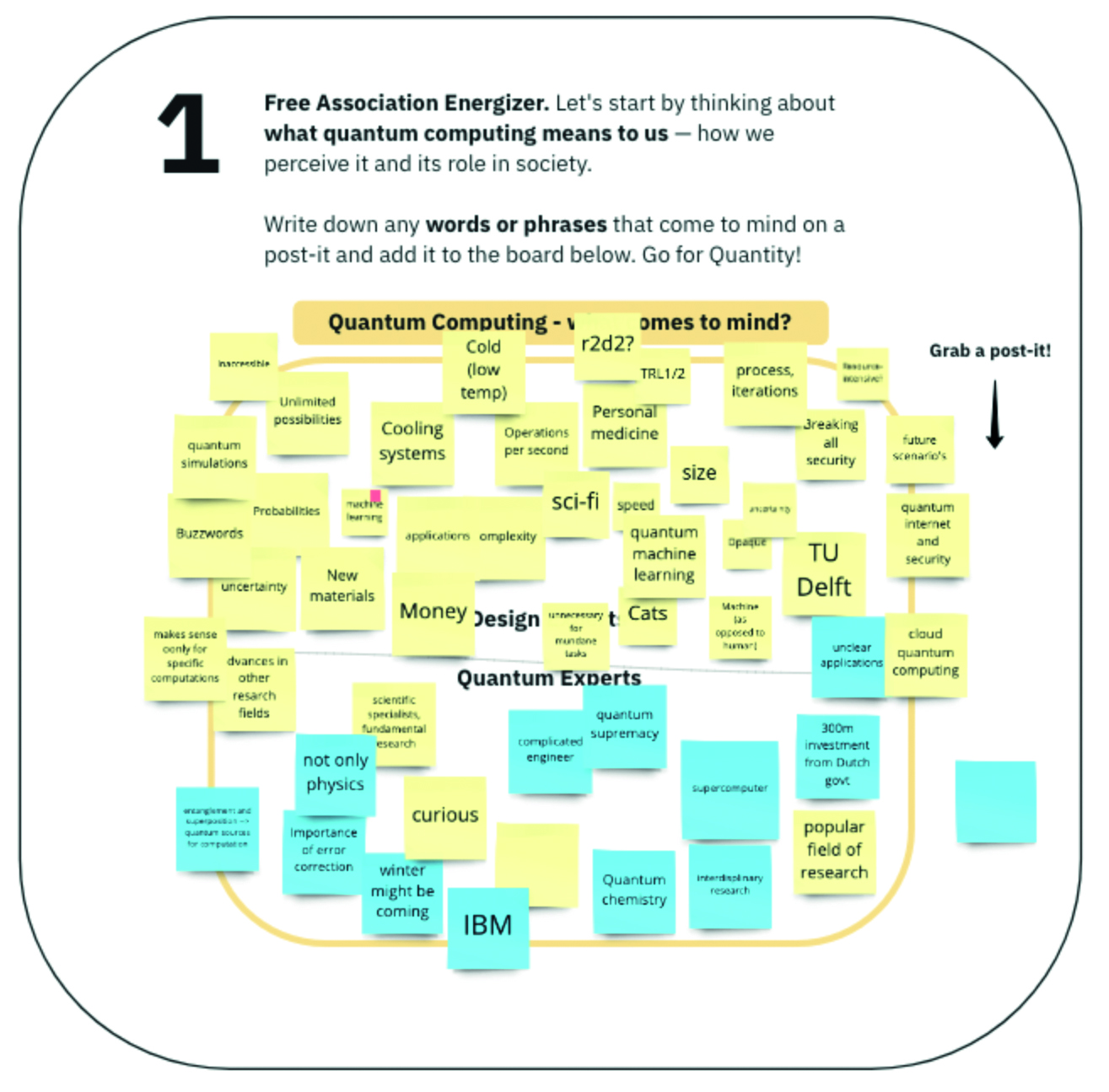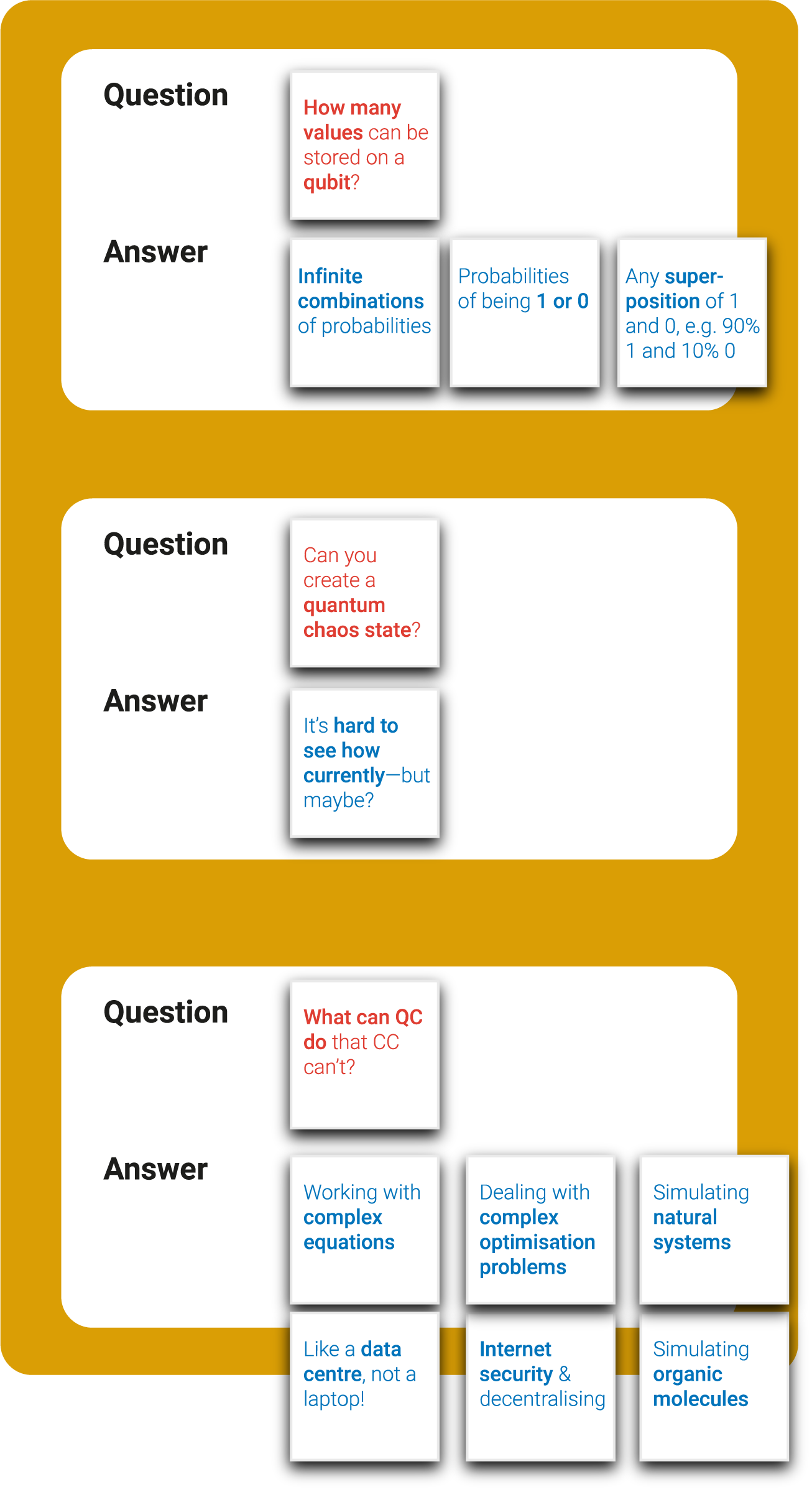Designing the future of quantum
Communication is key for the future of quantum computing.
Luckily, designers are ready to lend a hand.
Derek Lomas & Caiseal Beardow
A Social Challenge
Building a quantum computer is not purely a technical challenge, but a social and human one too. Quantum computing is unlikely to have the desired positive impact on society if societal stakeholders do not know how or for what purposes it can be used. Communicating this knowledge, however, remains a challenge: quantum computing can appear inscrutable for people outside the expert community.
The emerging field of Quantum Human-Computer Interaction (QHCI) seeks to address this issue by studying the needs of various societal groups who interact with quantum systems, and creating principles for designing such interactions. It is inherently multidisciplinary and requires engagement from both quantum computer scientists and designers (amongst others). In order for this engagement to be fruitful, however, common goals and vocabulary need to be established.
Quantum computing can appear inscrutable, even intimidating, without good communication strategies...Luckily, designers are experts in communication.
Creative Collaboration
Together with quantum computing experts from QuTech and designers from TU Delft’s Industrial Design Engineering (IDE) Faculty, we explored these topics through a collaborative workshop. Our explorations were centered around two topics: opportunities for design in the development of quantum computers, and knowledge gaps to be addressed in the process. We began the workshop by asking the participants to share free associations about quantum computing, followed by a short 15-minute lecture that covered basic principles of the field (such as qubits and superposition). The participants were then split into their respective professional domains (i.e. quantum computing or design) and asked to prepare questions for each other about the nature of their field. Next, mixed-profession groups were formed and the participants discussed both their prepared questions and other topics, such as challenges and design opportunities in quantum computing. Finally, we reconvened for a plenary session in which to reflect on our findings.
The results of the workshop provide some valuable insights into the way quantum computing, both currently and in the hypothetical future, is perceived. We noticed that quantum computing experts were more focused on known applications of the technology and its technical properties, whereas designers seemed to take a more general view, looking at wider (potential) application domains and characteristics. Additionally, the designers used words such as “inaccessible”, “buzzword” and “opaque” to describe their immediate thoughts on quantum computing. We saw that quantum computing can appear inscrutable, even intimidating, without good communication strategies. This is a clear barrier to the interdisciplinary work that is key to the future of quantum computing.
Communicating Value
The mixed-profession discussions we held revealed further barriers to such work. The designers frequently raised the issue of value: what is quantum computing good for, and how does this relate to society? In contrast, the quantum computing experts were unsure of not only the value of design to quantum computing, but what kinds of skills and tools designers actually use in their work. Again, the topic of communication was central – in particular, sharing knowledge between disciplines and creating a common vocabulary of quantum principles in order to do this.
It became increasingly clear that, although quantum computing experts are keen to work with other disciplines and learn from each other, they are unsure of how to share information in the right way for different audiences. This is partly due to the sheer complexity of their field, but also due to its nascence: we simply cannot say for sure how the technology will develop in the future. We have good predictions (as shown in the Hardware & Software part in this magazine), but as of yet the use cases we do have are relatively niche. This makes it difficult for other disciplines to imagine how they might meaningfully engage with quantum computing.
Designing the Future
Luckily, designers are experts in communication and may have much to offer quantum computing in this respect. In particular, the workshop participants identified visualizing quantum systems as a key opportunity for designers to contribute. Quantum behaviours can be quite unintuitive for those outside the field; better visual abstractions of these behaviours can help to build a level of ‘quantum intuition’. Based on the findings of our workshop, we expect that further collaboration between designers and quantum computing experts can help to generate such abstractions. In this way, a ‘middle level’ between visual accessibility and scientific accuracy can be created.
Who
We spoke with designers and quantum computing experts.
What
We asked the participants to explore the future of quantum computing and identify opportunities for design to contribute.
Takeaways
Communication is key to interdisciplinary work. Designers can help to facilitate this.
Better visualisations and abstractions of quantum principles are needed to make the field more accessible.



